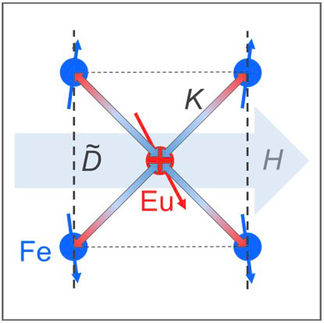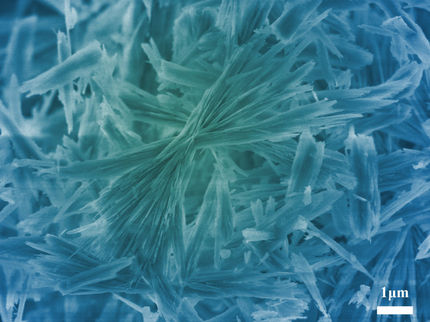New approach to determining how atoms are arranged in materials
Researchers from North Carolina State University, the National Institute of Standards and Technology (NIST) and Oak Ridge National Laboratory (ORNL) have developed a novel approach to materials characterization, using Bayesian statistical methods to glean new insights into the structure of materials. The work should inform the development of new materials for use in a variety of applications.
"We want to understand the crystallographic structure of materials -- such as where atoms are located in the matrix of a material -- so that we have a basis for understanding how that structure affects a material's performance," says Jacob Jones, a professor of materials science and engineering at NC State and co-author of a paper on the work. "This is a fundamentally new advance that will help us develop new materials that can be used in everything from electronics and manufacturing to vehicles and nanotechnologies."
The first step in understanding a material's crystallographic structure is bombarding a sample of the material with electrons, photons or other subatomic particles, using technology such as the Spallation Neutron Source at ORNL or the Advanced Photon Source at Argonne National Laboratory. Researchers can then measure the angle and energy of these particles as they are scattered by the material.
Then things get really tricky
Traditionally, the data from these scattering experiments has been analyzed using "least squares fitting" statistical techniques to infer a material's crystallographic structure. But these techniques are limited; they can tell researchers what a material's structure is likely to be -- but they don't fully describe the variability or uncertainty within the material's structure, because they don't describe the answers using probabilities.
"Least squares is a straightforward technique, but it doesn't allow us to describe the inferred crystallographic structure in a way that answers the questions that the materials scientists want to ask," says Alyson Wilson, a professor of statistics at NC State and co-author of the paper. "But we do have other techniques that can help address this challenge, and that's what we've done with this research."
In reality, the space between atoms isn't constant -- it's not fixed throughout a sample. And the same is true for every aspect of a material's structure.
"Understanding that variability, now possible with this new approach, allows us to characterize materials in a new, richer way," Jones says.
This is where Bayesian statistics comes into play
"For example, atoms vibrate," Wilson says. "And the extent of the vibration is controlled by their temperature. Researchers want to know how those vibrations are influenced by temperature for any given material. And Bayesian tools can give us probabilities of these thermal displacements in a material."
"This approach will allow us to analyze data from a wide variety of materials characterization techniques -- all forms of spectroscopy, mass spectrometry, you name it -- and more fully characterize all kinds of matter," Jones says.
"Honestly, it's very exciting," adds Jones, who is also the director of NC State's Analytical Instrumentation Facility, which houses many of these types of instruments.
"We also plan to use these techniques to combine data from different types of experiments, in order to offer even more insights into material structure," Wilson says.
Original publication
Other news from the department science

Get the chemical industry in your inbox
By submitting this form you agree that LUMITOS AG will send you the newsletter(s) selected above by email. Your data will not be passed on to third parties. Your data will be stored and processed in accordance with our data protection regulations. LUMITOS may contact you by email for the purpose of advertising or market and opinion surveys. You can revoke your consent at any time without giving reasons to LUMITOS AG, Ernst-Augustin-Str. 2, 12489 Berlin, Germany or by e-mail at revoke@lumitos.com with effect for the future. In addition, each email contains a link to unsubscribe from the corresponding newsletter.




























































